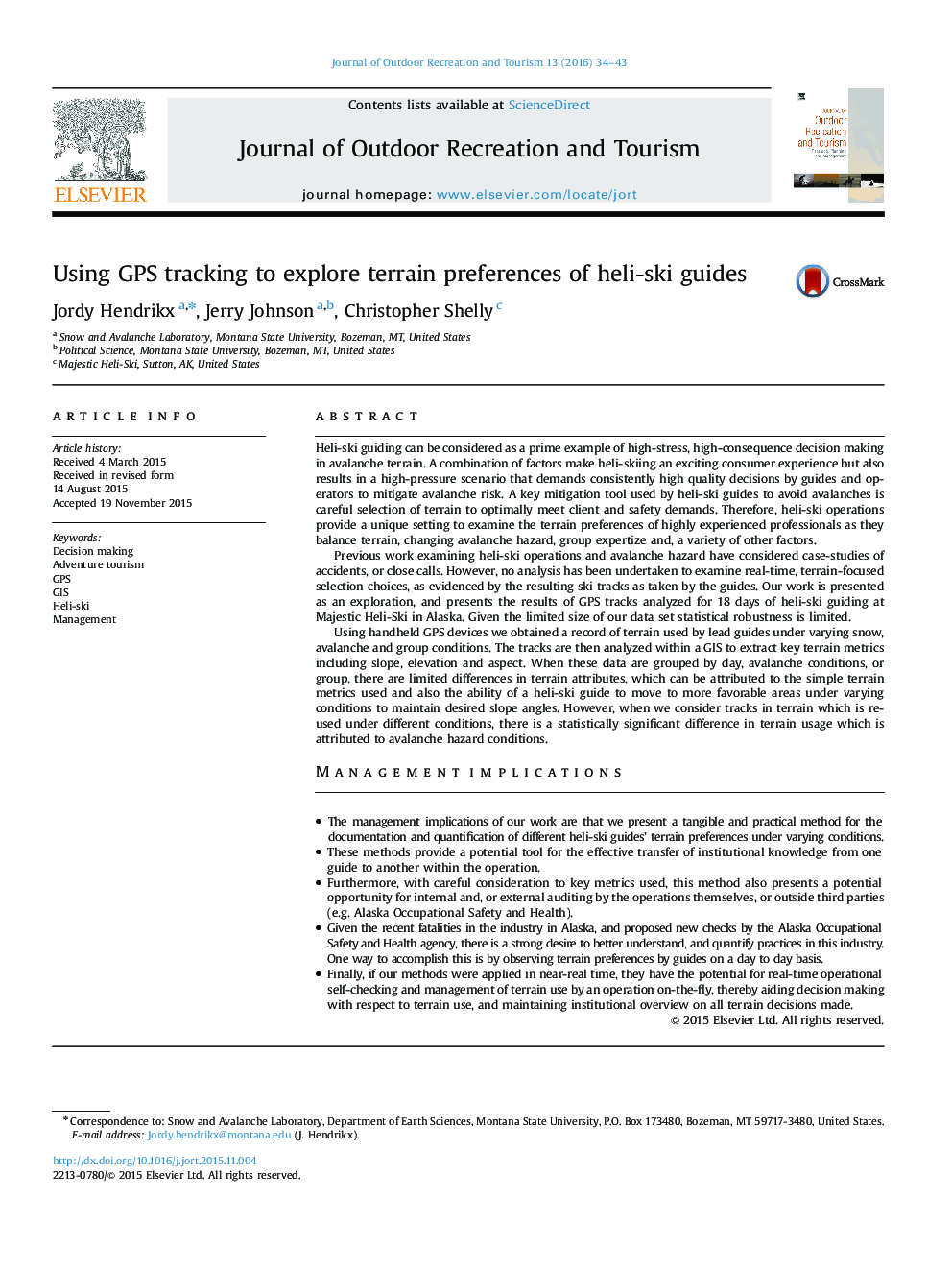| کد مقاله | کد نشریه | سال انتشار | مقاله انگلیسی | نسخه تمام متن |
|---|---|---|---|---|
| 92353 | 159950 | 2016 | 10 صفحه PDF | دانلود رایگان |
Heli-ski guiding can be considered as a prime example of high-stress, high-consequence decision making in avalanche terrain. A combination of factors make heli-skiing an exciting consumer experience but also results in a high-pressure scenario that demands consistently high quality decisions by guides and operators to mitigate avalanche risk. A key mitigation tool used by heli-ski guides to avoid avalanches is careful selection of terrain to optimally meet client and safety demands. Therefore, heli-ski operations provide a unique setting to examine the terrain preferences of highly experienced professionals as they balance terrain, changing avalanche hazard, group expertize and, a variety of other factors.Previous work examining heli-ski operations and avalanche hazard have considered case-studies of accidents, or close calls. However, no analysis has been undertaken to examine real-time, terrain-focused selection choices, as evidenced by the resulting ski tracks as taken by the guides. Our work is presented as an exploration, and presents the results of GPS tracks analyzed for 18 days of heli-ski guiding at Majestic Heli-Ski in Alaska. Given the limited size of our data set statistical robustness is limited.Using handheld GPS devices we obtained a record of terrain used by lead guides under varying snow, avalanche and group conditions. The tracks are then analyzed within a GIS to extract key terrain metrics including slope, elevation and aspect. When these data are grouped by day, avalanche conditions, or group, there are limited differences in terrain attributes, which can be attributed to the simple terrain metrics used and also the ability of a heli-ski guide to move to more favorable areas under varying conditions to maintain desired slope angles. However, when we consider tracks in terrain which is reused under different conditions, there is a statistically significant difference in terrain usage which is attributed to avalanche hazard conditions.Management implications●The management implications of our work are that we present a tangible and practical method for the documentation and quantification of different heli-ski guides' terrain preferences under varying conditions.●These methods provide a potential tool for the effective transfer of institutional knowledge from one guide to another within the operation.●Furthermore, with careful consideration to key metrics used, this method also presents a potential opportunity for internal and, or external auditing by the operations themselves, or outside third parties (e.g. Alaska Occupational Safety and Health).●Given the recent fatalities in the industry in Alaska, and proposed new checks by the Alaska Occupational Safety and Health agency, there is a strong desire to better understand, and quantify practices in this industry. One way to accomplish this is by observing terrain preferences by guides on a day to day basis.●Finally, if our methods were applied in near-real time, they have the potential for real-time operational self-checking and management of terrain use by an operation on-the-fly, thereby aiding decision making with respect to terrain use, and maintaining institutional overview on all terrain decisions made.
Journal: Journal of Outdoor Recreation and Tourism - Volume 13, April 2016, Pages 34–43
